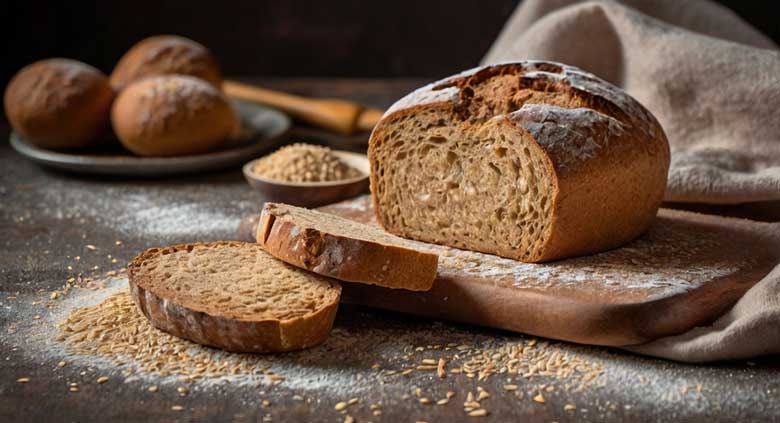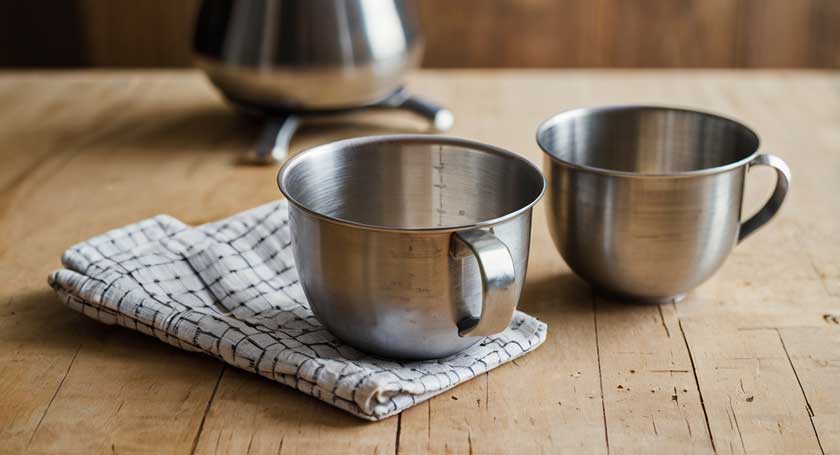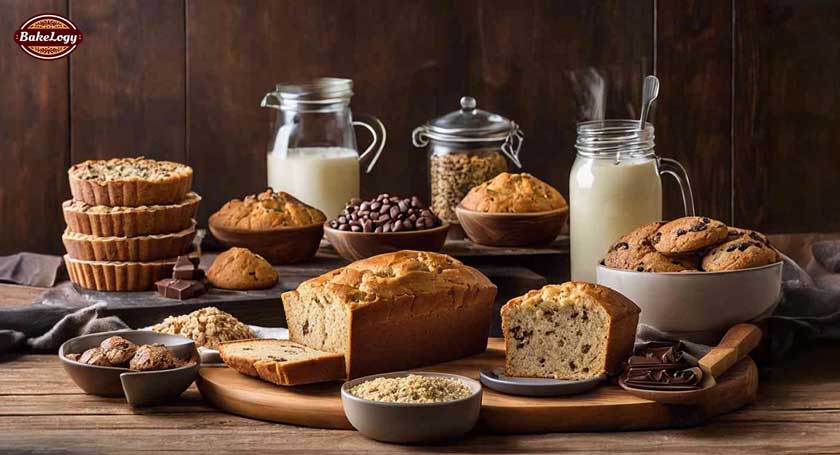Baking with whole wheat flour is a great way to add nutrition, flavor, and texture to your baked goods. Unlike refined flours, whole wheat flour for baking retains the bran and germ, making it a fiber-rich and wholesome choice. Whether you’re baking whole wheat bread at home, making pancakes with whole wheat flour without baking powder, or experimenting with baked goods with whole wheat flour, understanding how to use it properly is key. Whole wheat baking tends to produce denser results, but with the right techniques—such as adjusting hydration levels and using whole wheat pastry flour for delicate bakes—you can achieve soft and delicious treats. From baking whole wheat bread in a convection oven to baking a cake with whole wheat flour, mastering whole wheat flour usage opens up a world of healthier baking possibilities.
This guide will provide essential baking with whole wheat flour tips, including how to substitute whole wheat flour for bread flour, the ideal baking powder to whole wheat flour ratio, and whether you need more baking powder with whole wheat flour. You’ll also learn about the best whole wheat flour for bread, baking whole wheat bread in a Dutch oven, and the right baking whole wheat bread temperature. Whether you’re curious about baked whole wheat flour tortilla chips, baking powder biscuits with whole wheat flour, or rich bake whole wheat bread calories, this ultimate guide will help you make the most of whole wheat flour in baking.
What is Whole Wheat Flour?
Composition and Nutritional Benefits
What is whole wheat flour? It is a type of flour made by grinding whole grains of wheat, including the bran, germ, and endosperm. This makes it a more nutritious option compared to refined flours. Here are some key nutritional benefits of baked wheat flour:
- High in Fiber – Supports digestion and helps regulate blood sugar levels.
- Rich in Vitamins & Minerals – Contains essential nutrients like B vitamins, magnesium, iron, and antioxidants.
- Higher Protein Content – Improves the structure of baked goods, especially bread.
- More Healthy Fats – Due to the presence of the wheat germ, contributing to better heart health.
Because of these nutritional benefits, baking with whole wheat flour is a great choice for those looking to make healthier baked goods.
Difference Between Whole Wheat and All-Purpose Flour
The biggest difference between whole wheat flour for baking and all-purpose flour is how much of the wheat grain is used. Here’s how they compare:
| Feature | Whole Wheat Flour | All-Purpose Flour |
|---|---|---|
| Processing | Made from whole grain, including bran and germ | Refined, removing bran and germ |
| Texture | Denser, heavier bakes | Lighter, softer bakes |
| Flavor | Rich, nutty taste | Neutral taste |
| Nutritional Value | High in fiber, protein, and minerals | Lower in fiber and nutrients |
| Moisture Absorption | Absorbs more liquid, requiring recipe adjustments | Requires less liquid |
Many bakers ask, “Can whole wheat flour be substituted for bread flour?” or “Can I substitute whole wheat flour for bread flour?” The answer is yes, but adjustments are needed. Since baking with wheat flour absorbs more moisture, you may need to add extra liquid or mix it with all-purpose flour to maintain a softer texture.
If you’re looking for a lighter texture while still enjoying the benefits of whole wheat, consider recipes using whole wheat pastry flour, which has a lower protein content and works well for cakes, muffins, and pastries.
Benefits of Baking with Whole Wheat Flour
1. Health Benefits
Baking with whole grain flour offers numerous health benefits, making it a fantastic alternative to refined flours:
- Supports Digestive Health – The fiber content in whole wheat flour in baking helps with better digestion and prevents constipation.
- Stabilizes Blood Sugar – The complex carbohydrates in baking whole wheat flour result in slower sugar absorption, reducing blood sugar spikes.
- Promotes Heart Health – Nutrients like magnesium and antioxidants in whole wheat baking help lower cholesterol levels.
2. Richer Flavor and Texture
Whole wheat bake products have a distinct nutty, earthy flavor that enhances the overall taste of baked goods. Whether you’re baking whole wheat bread in a convection oven or baking a cake with whole wheat flour, using whole wheat adds depth and complexity to the flavor. Some delicious baked goods to try include:
- Baking powder biscuits with whole wheat flour – A hearty and flavorful alternative to regular biscuits.
- Baked whole wheat flour tortilla chips – A crispy, fiber-rich snack.
- Desserts made with whole wheat flour – From cookies to muffins, whole wheat flour adds a delightful richness.
3. Sustainability and Whole-Food Approach
Choosing whole wheat flour for baking also benefits the environment:
- Less Processing – Unlike white flour, baking with wholemeal flour uses the entire grain, reducing food waste.
- Fewer Additives – Since baking with 100% whole wheat flour retains its natural nutrients, there’s no need for artificial enrichment.
- Supports Local Farmers – Many whole wheat flours are produced using sustainable farming methods.
By following tips for baking with whole wheat flour, such as adjusting hydration levels and mixing flours for better texture, you can enjoy healthier and more flavorful baked goods. Whether you’re making baking whole wheat bread in a Dutch oven or experimenting with new baking with whole wheat flour recipes, incorporating whole wheat into your baking routine is a step toward a more nutritious and sustainable lifestyle.
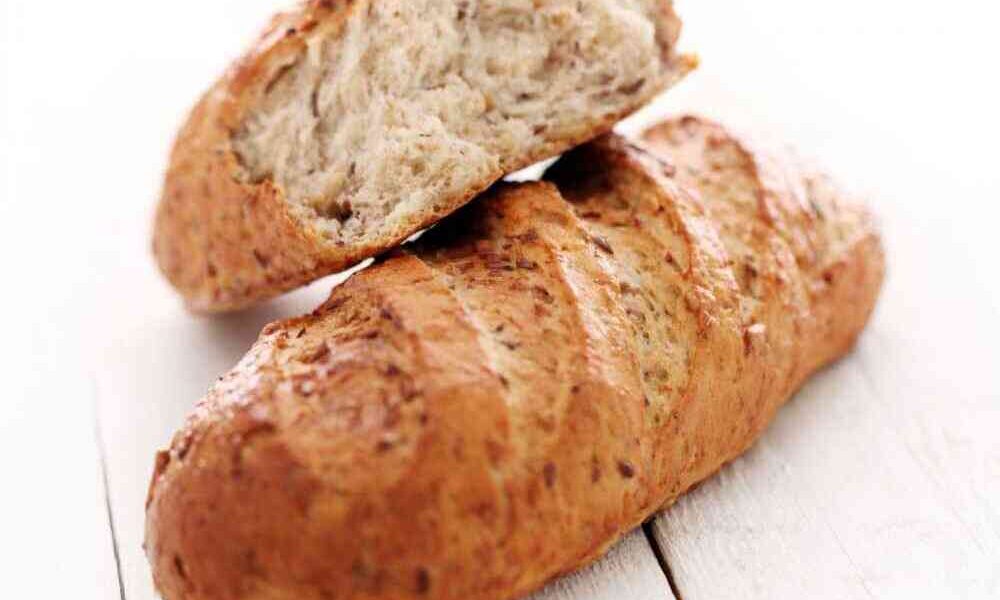
How to Substitute Whole Wheat Flour in Recipes
Whole Wheat vs. White Whole Wheat Flour
When baking with whole wheat flour, it’s important to understand the difference between regular whole wheat flour for baking and white whole wheat flour. While both are made from whole grains, they come from different types of wheat:
- Whole Wheat Flour – Made from hard red wheat, giving it a dense texture and nutty flavor.
- White Whole Wheat Flour – Made from hard white wheat, offering a milder taste and lighter texture while still retaining all the nutrients.
If you’re new to baking with wheat flour, white whole wheat is a great option as it provides the health benefits of whole grains while being less heavy than traditional baked wheat flour.
Best Ratios for Replacing All-Purpose Flour
When substituting whole wheat flour in baking, the right ratio ensures a successful bake:
- For Bread and Yeast-Based Recipes: Replace 50-100% of all-purpose flour with whole wheat flour for baking. Using 100% whole wheat will result in a denser loaf, so mixing with all-purpose flour can help maintain a lighter texture.
- For Cakes and Muffins: Replace up to 50-75% of the flour to keep the texture soft. If using recipes with whole wheat pastry flour, you can substitute 100% for a lighter, more tender bake.
- For Cookies and Brownies: Replace 25-50% of the flour for a slightly nutty taste while keeping the chewiness intact.
Adjusting Liquid and Fat Content
Since baking with wholemeal flour absorbs more liquid than refined flour, slight adjustments help maintain moisture:
- Increase Hydration – Add an extra tablespoon of water, milk, or other liquids per cup of whole wheat flour.
- Use More Fat – Extra butter, oil, or eggs help counteract the denser texture.
- Try Sweeteners – Natural sweeteners like honey or maple syrup add moisture while enhancing the flavor.
If you’re wondering, “Can I substitute whole wheat flour for bread flour?”, the answer is yes, but it requires additional liquid and longer kneading to improve gluten development.
Tips for Successful Whole Wheat Baking
How to Prevent Dense or Dry Textures
One common challenge in whole wheat baking is achieving a soft texture. To prevent dense or dry results, follow these baking with whole wheat flour tips:
- Sift the Flour – Aerating baking whole wheat flour helps create a lighter texture.
- Don’t Overmix – Overworking the dough develops too much gluten, making baked goods tough.
- Use a Blend – Mixing whole wheat with all-purpose flour can balance texture and nutrition.
- Add Extra Leavening – You may need more baking powder with whole wheat flour to maintain a good rise.
Best Liquids and Sweeteners to Pair with Whole Wheat Flour
Since baking with whole grain flour can be slightly bitter, pairing it with the right ingredients enhances flavor and texture:
- Liquids: Buttermilk, yogurt, milk, or fruit purees like applesauce help retain moisture.
- Sweeteners: Honey, maple syrup, or brown sugar complement the nuttiness of baking with wheat flour.
For example, when baking a cake with whole wheat flour, using honey instead of white sugar adds moisture and a balanced sweetness.
Importance of Resting the Dough/Batter
Resting the dough or batter allows the liquid to fully absorb into the flour, improving the texture of baked goods with whole wheat flour:
- For Bread – Let the dough rest for at least 20-30 minutes before kneading to strengthen gluten.
- For Pancakes and Muffins – A 10-15 minute rest before baking results in a softer texture.
This step is especially helpful when baking whole wheat bread in a convection oven, ensuring an even rise.
By following these tips for baking with whole wheat flour, you can create delicious, healthy baked goods with great flavor and texture. Whether you’re baking whole wheat bread in a Dutch oven, making pancakes with whole wheat flour without baking powder, or trying a new baking whole wheat flour recipe, these techniques will help you achieve the best results!
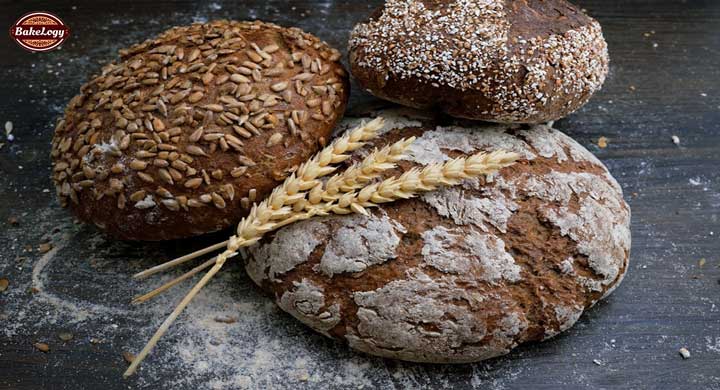
Best Recipes Using Whole Wheat Flour
Using whole wheat flour in baking opens up a world of wholesome and delicious possibilities. From hearty breads to soft muffins and crispy flatbreads, there are many ways to enjoy the rich flavors and nutritional benefits of baking with whole wheat flour. Below are some of the best recipes that showcase the versatility of whole wheat flour for baking.
1. Whole Wheat Bread
One of the most classic ways to use whole wheat flour in baking is by making whole wheat bread. This high-fiber, nutrient-packed bread is perfect for sandwiches or toast.
- Recipe for Bread with Whole Wheat Flour: Combine whole wheat flour, yeast, water, a touch of honey, and salt to create a flavorful, rustic loaf. Let the dough rest to improve elasticity, then bake until golden brown.
- Baking Whole Wheat Bread in a Dutch Oven: Using a Dutch oven traps steam, giving the bread a perfect crust.
- Baking Whole Wheat Bread in a Convection Oven: Adjust the temperature slightly lower than a regular oven for even baking.
2. Muffins and Quick Breads
If you enjoy soft and fluffy treats, baking muffins with whole wheat flour is a great way to add a wholesome twist to your favorite recipes.
- Banana Muffins: Replace all-purpose flour with whole wheat for a healthier version of classic banana muffins.
- Pumpkin Bread: A moist and flavorful quick bread that works beautifully with whole wheat flour.
- Baking Powder Biscuits with Whole Wheat Flour: These flaky, buttery biscuits pair well with soups or breakfast spreads.
3. Whole Wheat Cookies and Cakes
For those who love desserts, baking a cake with whole wheat flour can add a subtle nutty flavor while keeping treats nutritious.
- Chocolate Chip Cookies: Whole wheat flour creates a slightly chewy and wholesome texture.
- Carrot Cake: Moist and rich, this cake benefits from the depth of flavor that whole wheat flour provides.
- Dessert Made with Whole Wheat Flour: From brownies to energy bars, there are many ways to incorporate whole wheat into sweet treats.
4. Pizza Dough and Flatbreads
For a heartier crust, try baking with wholemeal flour when making pizza or flatbreads.
- Whole Wheat Pizza Dough: A nutty, crispy crust made by replacing part or all of the all-purpose flour with whole wheat flour.
- Whole Wheat Tortilla Chips: Baked, not fried, these make for a healthier snack.
- Baked Samosa with Whole Wheat Flour: A nutritious alternative to traditional fried samosas.
Bonus: Waffles and Sourdough
- Recipe for Waffles with Whole Wheat Flour: Add buttermilk for extra fluffiness while keeping a crisp texture.
- Baking Sourdough with Whole Wheat Flour: A tangy, chewy loaf that pairs wonderfully with soups and cheeses.
By experimenting with these baking whole wheat flour recipes, you can enjoy a variety of baked goods that are both nutritious and flavorful. Whether you’re baking sourdough with whole wheat flour, whipping up muffins, or making fresh flatbreads, whole wheat flour is a fantastic ingredient to work with!
Common Mistakes and How to Avoid Them
Baking with whole wheat flour** requires a few adjustments to achieve the best results. Many bakers make mistakes that lead to dense, dry, or tough baked goods. Below are some common errors and tips to avoid them.
1. Overmixing and Toughness
Whole wheat flour in baking has more fiber and protein than all-purpose flour, which can lead to a denser texture. Overmixing activates the gluten too much, resulting in tough baked goods.
How to Avoid It:
- Mix the batter or dough just until the ingredients are combined.
- Let the dough rest before baking to allow the flour to absorb moisture.
2. Not Adjusting Baking Time and Temperature
Because baking with whole wheat flour absorbs more liquid, baked goods may take longer to cook. However, using the same baking time and temperature as white flour recipes can cause dryness or undercooked centers.
How to Avoid It:
- Lower the oven temperature slightly (about 25°F less than the original recipe).
- Keep an eye on doneness by checking for a firm texture and golden brown color.
3. Choosing the Wrong Type of Whole Wheat Flour
Not all whole wheat flours are the same. For example, white whole wheat flour is milder, while traditional whole wheat flour has a stronger flavor and coarser texture.
How to Avoid It:
- Use the best whole wheat flour for bread if making yeast-based recipes.
- For softer baked goods like cakes and muffins, try recipes using whole wheat pastry flour for a lighter texture.
Conclusion
Baking with whole wheat flour** is a rewarding experience that brings both health benefits and rich flavors to your baked goods. By understanding the key differences between whole wheat and refined flours, making proper ingredient adjustments, and avoiding common mistakes, you can create delicious, wholesome treats with ease.
Don’t be afraid to experiment! Whether you’re baking whole wheat bread at home, making muffins, or trying a recipe for bread with whole wheat flour, the possibilities are endless. Start by substituting part of the flour in your favorite recipes and gradually work your way up to baking with 100% whole wheat flour.
Try It Today!
Pick a recipe from this guide and start your whole wheat baking journey. Share your experience, tips, and favorite recipes in the comments or with fellow bakers. Happy baking! 🍞🎂
Frequently Asked Questions About Baking with Whole Wheat Flour
- How to bake whole wheat bread?
To bake whole wheat bread, use whole wheat flour for baking, adjust hydration for a softer crumb, and allow enough time for the dough to rise properly. Adding a touch of honey or molasses enhances flavor. - Can you bake with whole wheat flour?
Yes! Baking with whole wheat flour works for bread, muffins, cookies, and cakes, but you may need to adjust liquid content and baking time to prevent dryness. - How does whole wheat flour affect baking?
Whole wheat flour in baking absorbs more liquid, making the dough denser. It also has a nuttier, richer flavor compared to refined flour. - What to bake with whole wheat flour?
You can bake whole wheat bread, muffins, cookies, cakes, pizza dough, and flatbreads. It’s versatile for both sweet and savory recipes. - Does whole wheat flour bake the same as all-purpose?
No, baking with whole wheat flour vs all-purpose requires adjustments. Whole wheat absorbs more moisture and creates denser textures, so adding extra liquid or combining it with all-purpose flour can help. - Can you bake cookies with whole wheat flour?
Yes, baking with whole wheat flour in cookies adds a hearty, nutty flavor. You may need to increase moisture content to keep them soft. - How much whole wheat flour for all-purpose?
You can substitute whole wheat flour for baking up to 50-100% of all-purpose flour, but for lighter textures, a 50/50 mix is recommended. - Is baking with whole wheat flour healthier?
Yes, baking with whole wheat flour is healthier since it contains more fiber, protein, and essential nutrients than white flour, making it a great option for balanced diets. - Can you bake sourdough with whole wheat flour?
Yes, baking sourdough with whole wheat flour enhances the depth of flavor and increases fermentation activity, but it may require more hydration. - How to store whole wheat flour properly?
Store whole wheat flour for baking in an airtight container in a cool, dry place. For longer shelf life, refrigerate or freeze it to prevent it from going rancid.
